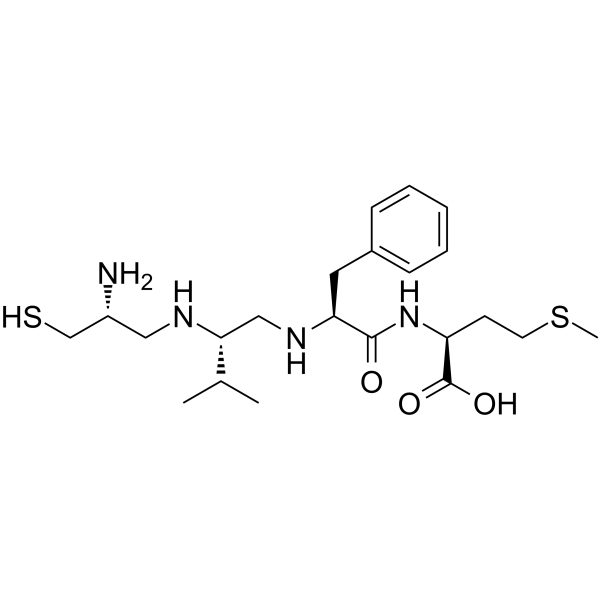A role for Ras in v-Crk transformation.
H Greulich, H Hanafusa
Index: Cell Growth Differ. 7(11) , 1443-51, (1996)
Full Text: HTML
Abstract
The v-crk oncogene, identified as the transforming gene of the CT10 avian sarcoma virus, encodes an adaptor protein capable of transforming chicken embryo fibroblasts (CEFs). Because the Src homology 3 domain of v-Crk is capable of binding the Ras family guanine nucleotide exchange factors Sos and C3G, the contribution of cellular Ras to signaling by v-Crk was evaluated. NIH-3T3 cell lines stably expressing the v-crk oncogene exhibited a transformed phenotype similar to that of CT10-infected CEFs. Treatment of these cells with a farnesylation inhibitor, as well as coexpression of dominant negative Ras, caused morphological reversion of the v-Crk NIH-3T3 cells. Dominant negative Ras expression also inhibited colony formation in soft agar without affecting tyrosine phosphorylation of cellular proteins. Although elevation of basal Erk activity could be demonstrated in v-Crk-transformed CEFs, no significant elevation of basal Erk activity was observed in the v-Crk-transformed NIH-3T3 cells. This suggests that v-Crk requires Ras function for transformation of NIH-3T3 cells and may utilize a Ras effector other than Erk to maintain the transformed phenotype.
Related Compounds
| Structure | Name/CAS No. | Molecular Formula | Articles |
|---|---|---|---|
 |
FTase Inhibitor I
CAS:149759-96-6 |
C22H38N4O3S2 |
|
[Anti tumor activity of farnesyl transferase inhibitor].
1997-01-01 [Gan To Kagaku Ryoho. 24(2) , 145-55, (1997)] |
|
Bcl-2 differentially targets K-, N-, and H-Ras to mitochondr...
1999-09-02 [Oncogene 18(35) , 4930-9, (1999)] |
|
Peptidomimetic inhibitors of Ras farnesylation and function ...
1993-09-05 [J. Biol. Chem. 268(25) , 18415-8, (1993)] |
|
Insulin regulation of glucose-6-phosphate dehydrogenase gene...
1998-06-12 [J. Biol. Chem. 273(24) , 14968-74, (1998)] |
|
Activation of the store-operated calcium current ICRAC can b...
2003-12-01 [J. Physiol. 553(Pt 2) , 387-93, (2003)] |